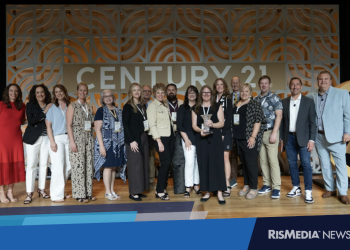Single women have outpaced men in homeownership since 1986, according to the U.S. Census Bureau. By and large, college-educated women who have delayed marriage have greater buying power and overall financial independence. As more single mothers enter the labor force, they are one step closer to financial independence and being able to afford a home.
Despite facing many barriers to employment, such as finding affordable childcare and predictable work schedules, the share of young, single mothers in the workforce increased 4 percentage points since 2015, as shown in recent Current Population Survey (CPS) data.
The rise in single mothers entering the workforce has been a response to less reliable federal policies, such as welfare, that have left working for pay the only option. In addition, new policies at the local level, such as paid leave, minimum wage increases and other family-friendly policies, have made it easier for single mothers to take advantage of the competitive labor market. The highest growth in employment for young mothers has been in nursing and in managing and moving warehouse inventory.
According to a Federal Reserve Bank of San Francisco report, women of all races and ethnicities between the ages of 25 and 54 have increased their share in labor force participation since 2014. The share of women with either a college education or more in the labor force is the highest among all groups by educational attainment, but growth has not been as significant in the last few years.
There are 2.7 million mothers between the ages of 25 and 34 who are not married or living with a partner, and they make up nearly 25 percent of all mothers in this age group. On top of the daily challenges of raising children on their own, these women also tend to be poorer and less educated than other women their age.
Half of single mothers make less than $30,000 per year, which is true for only 20 percent of all young women. Half of single mothers also have only a high school diploma or less, compared to just 29 percent of all young women. Single mothers in both rural and urban areas without a college degree, however, account for a majority of the recent increase in single mothers’ participation in the labor force.
Single or not, with children or without, women seek homeownership for a variety of reasons, including having a sanctuary or refuge, cementing one’s professional progress and helping lay an economic foundation for years to come, and providing a stable home for their children.
Fortunately, there are resources available for single women homebuyers to assist them in the home-buying process. For instance, programs are offered by the Federal Housing Administration (FHA) and the United States Department of Agriculture (USDA), as well as at the local and state level. Mortgage Credit Certificates (MCCs) and Individual Development Accounts (IDAs) are also at their disposal. These programs can help single mothers buy homes and assist with the down payment regardless of whether or not they have a low income or poor credit history.
 Desirée Patno is the CEO and president of Women in the Housing and Real Estate Ecosystem (NAWRB) and Desirée Patno Enterprises, Inc. (DPE), as well as chairwoman of NAWRB’s Diversity & Inclusion Leadership Council (NDILC). With 30 years of experience in housing, Patno is a champion for women’s economic growth and independence. In 2017, Entrepreneur.com named her the Highest-Ranking Woman and 4th Overall Top Real Estate Influencer to Follow. For more information, please visit www.nawrb.com.
Desirée Patno is the CEO and president of Women in the Housing and Real Estate Ecosystem (NAWRB) and Desirée Patno Enterprises, Inc. (DPE), as well as chairwoman of NAWRB’s Diversity & Inclusion Leadership Council (NDILC). With 30 years of experience in housing, Patno is a champion for women’s economic growth and independence. In 2017, Entrepreneur.com named her the Highest-Ranking Woman and 4th Overall Top Real Estate Influencer to Follow. For more information, please visit www.nawrb.com.











